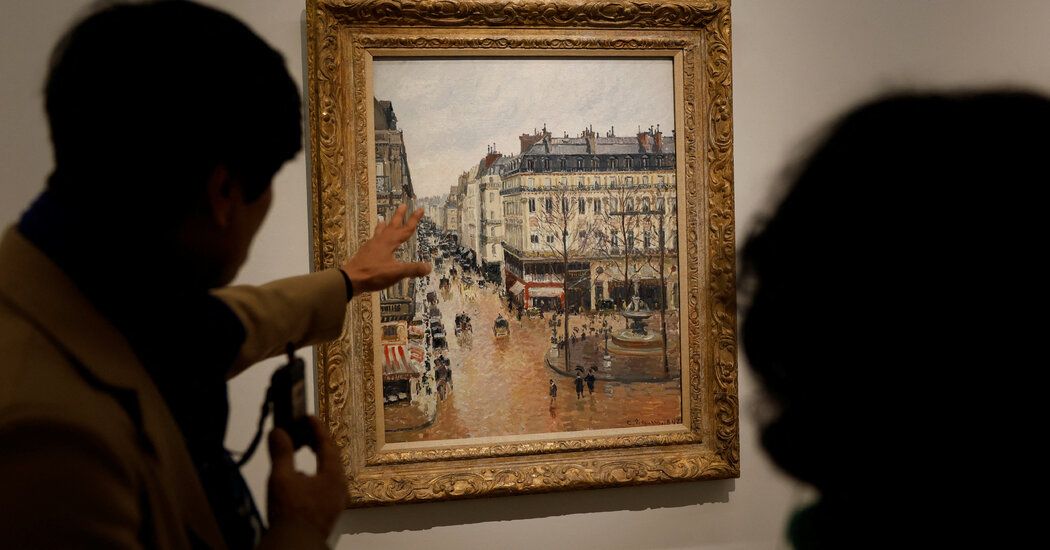The heirs of a woman who was forced to hand over a painting to the Nazis suffered a blow Tuesday in a decades-long legal dispute between them and the Spanish museum that now owns the work, when a California appeals court ruled that the museum should preserve the property.
The ruling, in one of the longest-running Nazi restitution cases, involves a painting by Camille Pissarro titled “Rue Saint-Honoré Après-midi, Effet de Pluie” (“Rue Saint-Honoré in the Afternoon, Effect of Rain”). ) which is estimated to be worth millions of dollars. The painting was given by a Jewish woman, Lilly Cassirer, to obtain an exit visa from Germany in 1939. The work was purchased by the Thyssen-Bornemisza Collection Foundation and eventually ended up in a museum owned by the Spanish government.
On Tuesday, a three-judge panel of the U.S. Court of Appeals for the Ninth Circuit ruled that Spanish law, not California law, applies to the case, and that the museum has “prescriptive title” over the painting after bought it in 1993.
Sam Dubbin, an attorney for David Cassirer, Lilly's great-grandson and lead plaintiff in the case, wrote in an email to the New York Times that the court's decision was incorrect and that Cassirer would seek a full review by a panel of experts. 11 judges.
“The Cassirers believe that, especially in light of the explosion of anti-Semitism in this country and around the world today, they must challenge Spain's continued insistence on hosting art looted by the Nazis,” Dubbin wrote. “This decision also gives the green light to looters around the world.”
Lawyers for the museum said in an email that the ruling was “a welcome conclusion to this case.”
Cassirer's heirs, who now live in Southern California, have been locked in a legal battle against the museum since 2005, when Claude Cassirer, David's father (who has since died), initially filed suit. The heirs maintain that the museum should return the painting to its original owners. The museum's lawyers have argued that its curators did not know the painting was stolen and under Spanish law have no responsibility for returning it, while Cassirer's lawyers have argued that the museum's curators would have discovered the theft if they had done their due diligence. diligence in researching the history of painting.
The key legal question has been whether Spanish or US law should govern in this situation. The Cassirer family faced a series of setbacks after several courts ruled that Spanish law governed the case and the museum retained ownership of the painting.
The Cassirers then petitioned the Supreme Court, which took up the case. In a unanimous decision in 2022, the court returned the case to the appellate level and ruled that the lower court should compare Spanish law to California law, rather than federal law, when evaluating the case.
Neither party to the lawsuit disputes the facts of the case surrounding Lilly Cassirer's delivery of the work. And in 1958, Germany paid him compensation of about 265,000 current dollars.
The painting was later sold at a Nazi government auction and passed through the hands of various collectors, including some in the United States, before being purchased by Baron Hans Heinrich Thyssen-Bornemisza in 1976. The Spanish government purchased the art collection of the baron. including the painting, in 1993 and has been on display at the museum since then. In 2000, Claude Cassirer discovered that the painting was in the museum.
In a concurring opinion from the Ninth Circuit Court, Judge Consuelo M. Callahan wrote that while she agreed with the court's ruling that the Spanish museum was not legally obligated to return the painting, she believed the museum still had a duty. morality of doing so.












